This Next-Gen Spacesuit Could Protect Astronauts on the Moon and Mars
By Chelsea Gohd
Date: 8th Aug.2019
www.SPACE.com
ILC Dover's "Astro" is designed for spacewalks, the moon and Mars.
Space.com is supported by its audience. When you purchase through links on our site, we may earn an affiliate commission. Learn more
This Next-Gen Spacesuit Could Protect Astronauts on the Moon and Mars
By Chelsea Gohd 12 hours ago Tech
ILC Dover's "Astro" is designed for spacewalks, the moon and Mars.
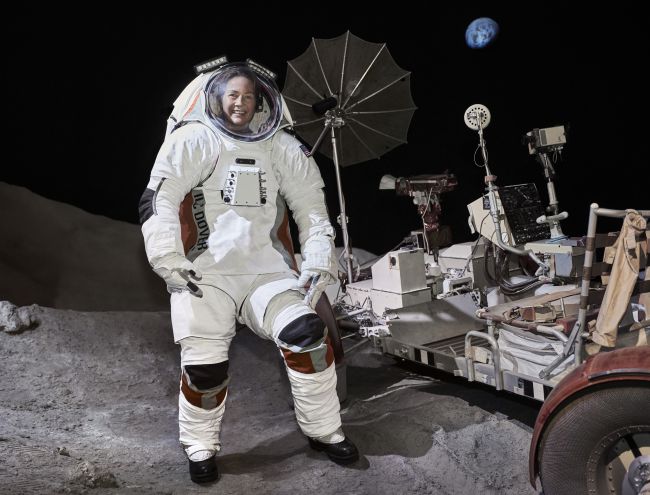
Patty Stoll of ILC Dover wearing the Next Generation Spacesuit.
(Image: © Samantha Seddon)
The same company that helped to design and supply spacesuits for NASA's Apollo program has unveiled a Next Generation Spacesuit system prototype nicknamed Astro.
ILC Dover and Collins Aerospace, which has worked with ILC Dover to produce spacesuits currently in use aboard the International Space Station, revealed this next-gen spacesuit at a July 25 event on Capitol Hill in Washington, D.C. The event simultaneously celebrated the 50th anniversary of the lunar landing.
The new suit system consists of both an extravehicular activity (EVA) suit and a life-support backpack that regulates pressure and provides oxygen and cooling. Designed with future crewed missions in mind, the suit could serve NASA and commercial space partners as they continue to develop plans to return humans to the moon and launch crewed missions to Mars. ILC Dover developed the spacesuit, while Collins Aerospace provided the life-support backpack for the prototype demonstration.
Related: From Apollo to Mars: The Evolution of Spacesuits
Image 1 of 9
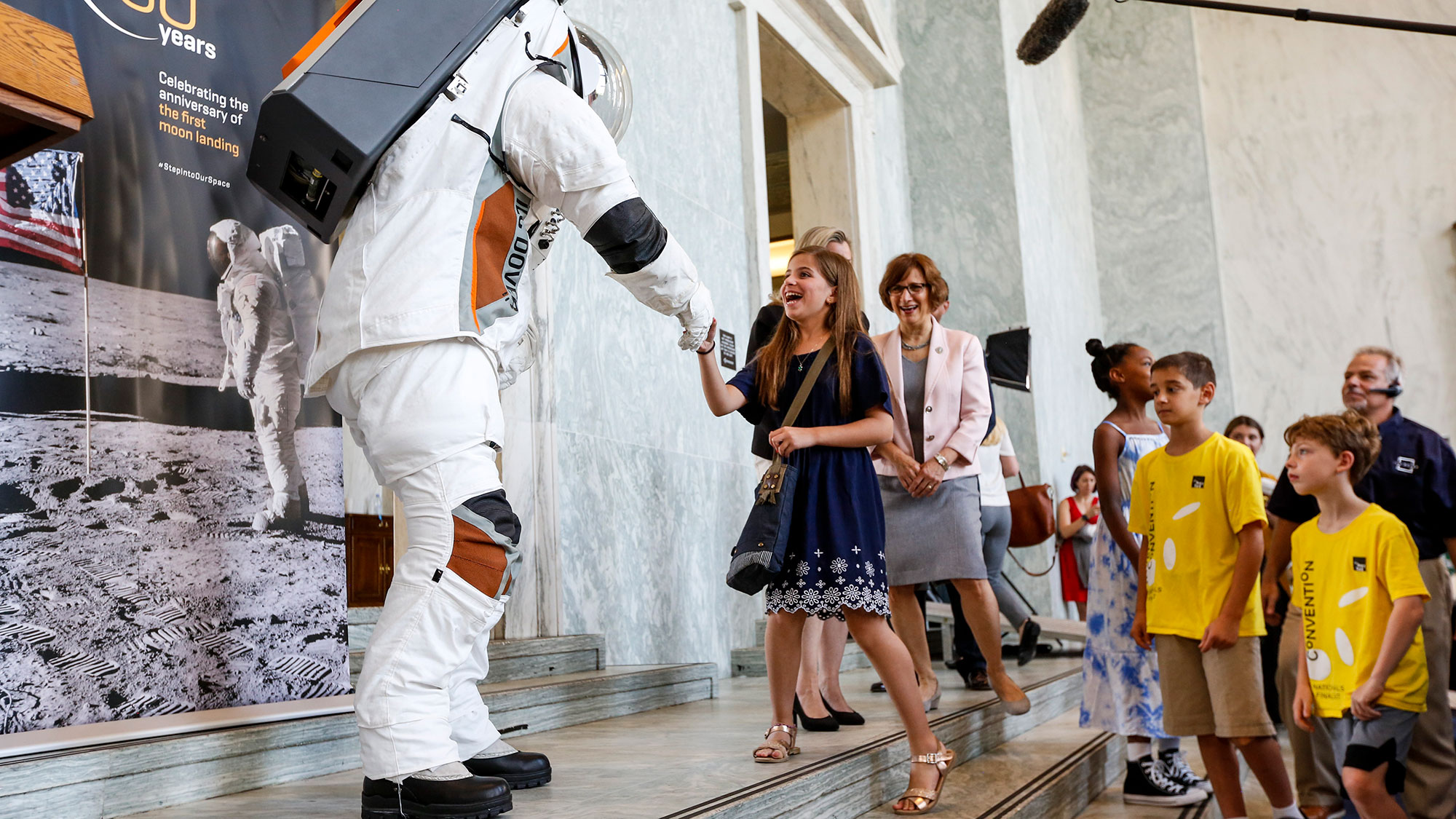
An engineer greets children while inside the prototype of Collins Aerospace, a unit of United Technologies Corp.'s Next Generation Space Suit system, unveiled during the Space Day on the Hill on Thursday, July 25, 2019 in Washington. The showcase was timed to commemorate the 50th Anniversary of Apollo 11.
(Image credit: Eric Kayne/AP Images for United Technologies)
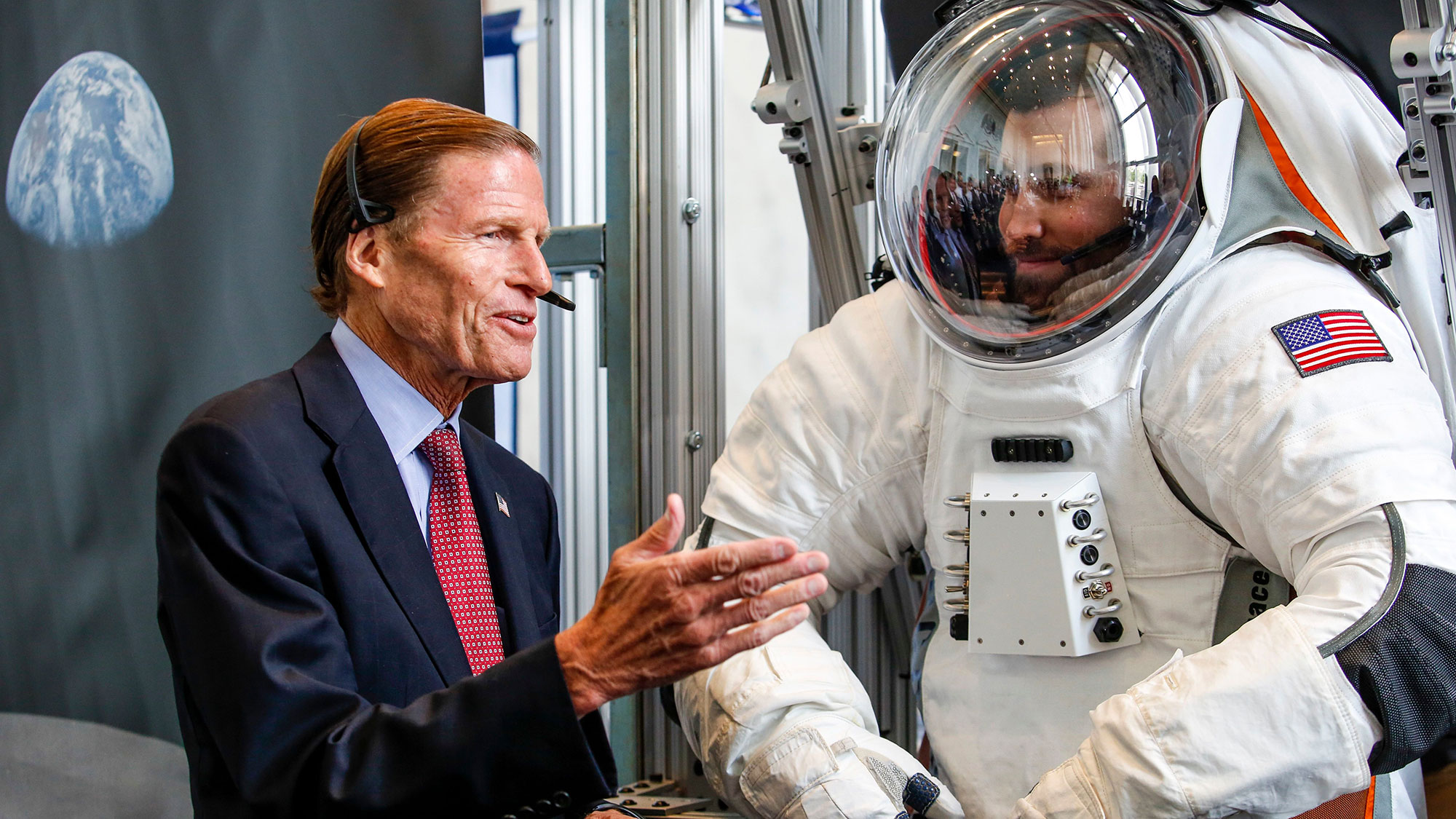
Visitors and members of Congress inspect vintage and cutting-edge space equipment as Collins Aerospace, a unit of United Technologies Corp., unveiled the prototype of its Next Generation Space Suit system during the Space Day on the Hill on in Washington. The showcase was timed to commemorate the 50th Anniversary of Apollo 11.
(Image credit: Eric Kayne/AP Images for United Technologies)
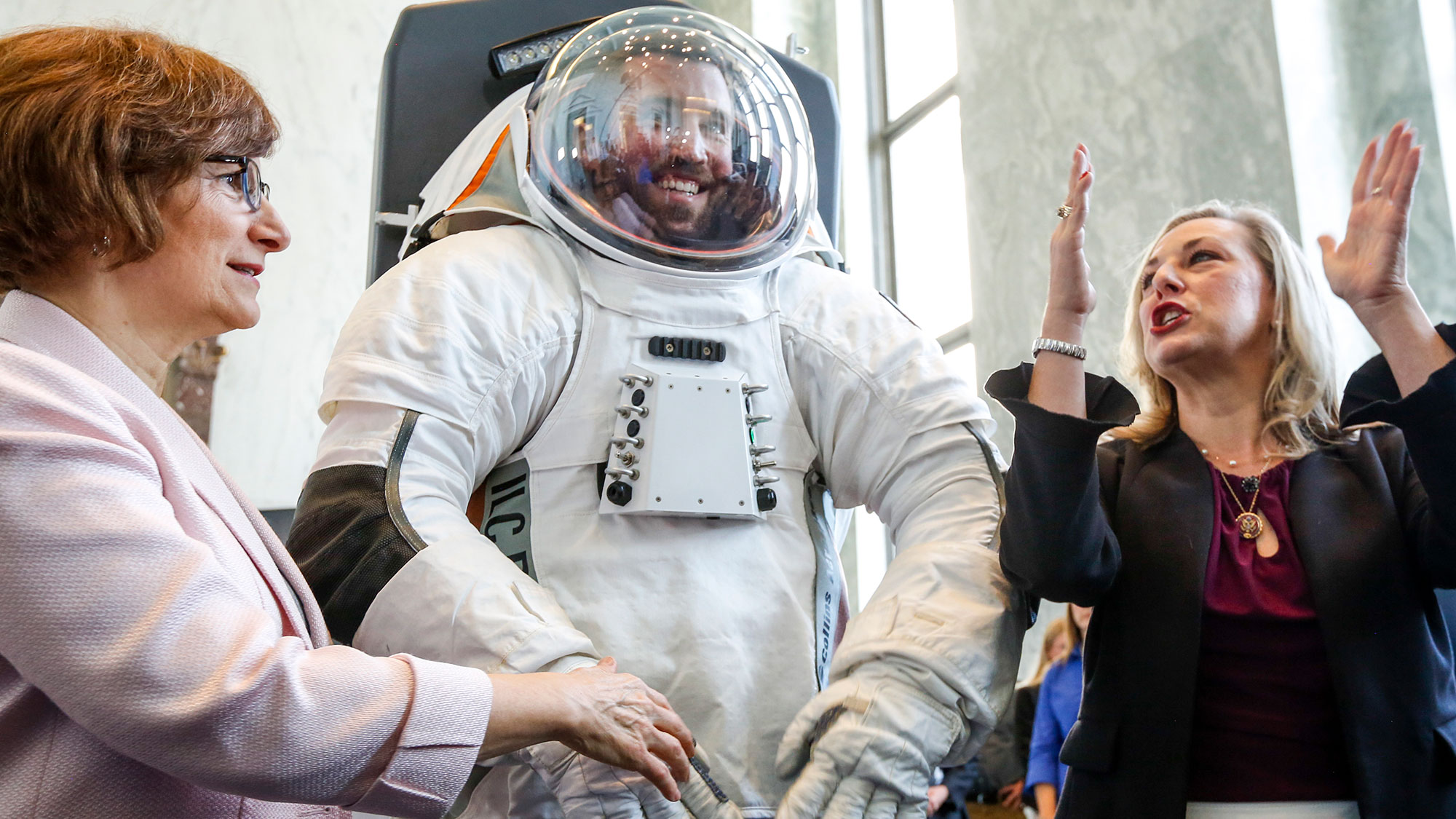
Rep. Suzanne Bonamici (D-OR), left, and Rep. Kendra Horn (D-OK), join an engineer inside the prototype of Collins Aerospace, a unit of United Technologies Corp.'s Next Generation Space Suit system, unveiled during the Space Day on the Hill on Thursday, July 25, 2019 in Washington. The showcase was timed to commemorate the 50th Anniversary of Apollo 11.
(Image credit: Eric Kayne/AP Images for United Technologies)
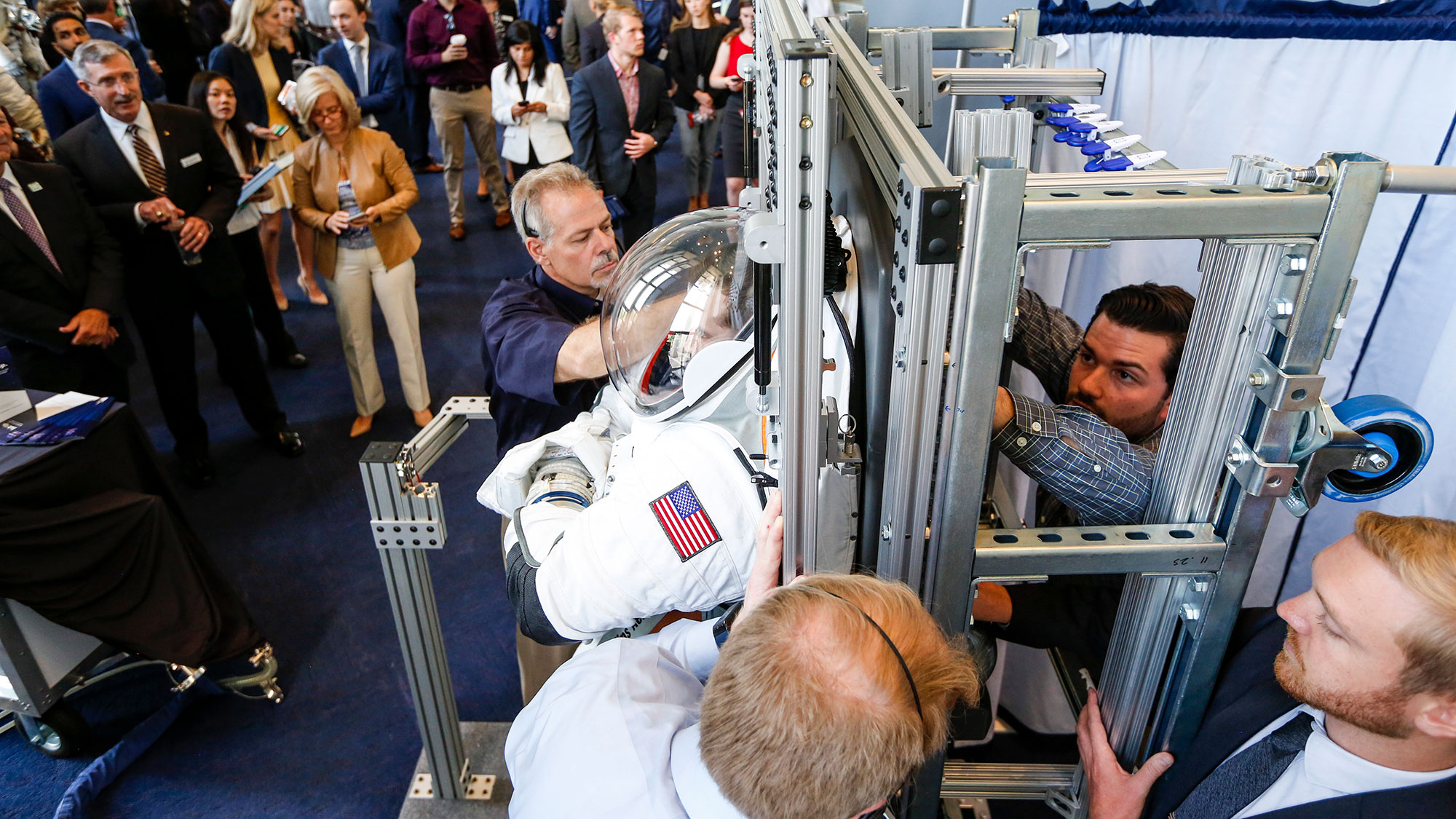
An engineer is secured into the prototype of Collins Aerospace, a unit of United Technologies Corp.'s Next Generation Space Suit system, unveiled during the Space Day on the Hill on Thursday, July 25, 2019 in Washington. The showcase was timed to commemorate the 50th Anniversary of Apollo 11.
(Image credit: Eric Kayne/AP Images for United Technologies)
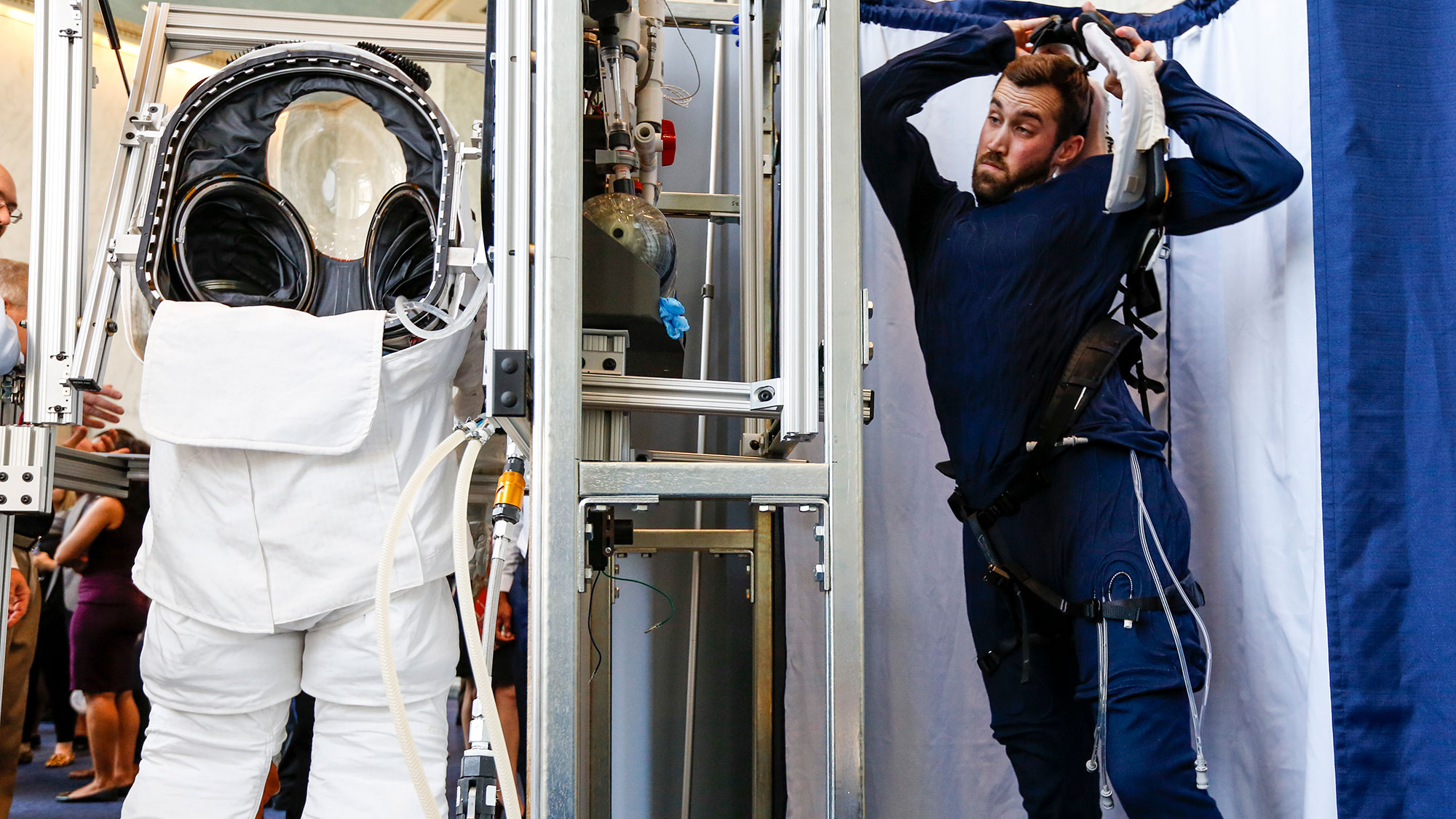
An engineer prepares to get into the prototype of Collins Aerospace, a unit of United Technologies Corp.'s Next Generation Space Suit system, unveiled during the Space Day on the Hill on Thursday, July 25, 2019 in Washington. The showcase was timed to commemorate the 50th Anniversary of Apollo 11.
(Image credit: Eric Kayne/AP Images for United Technologies)
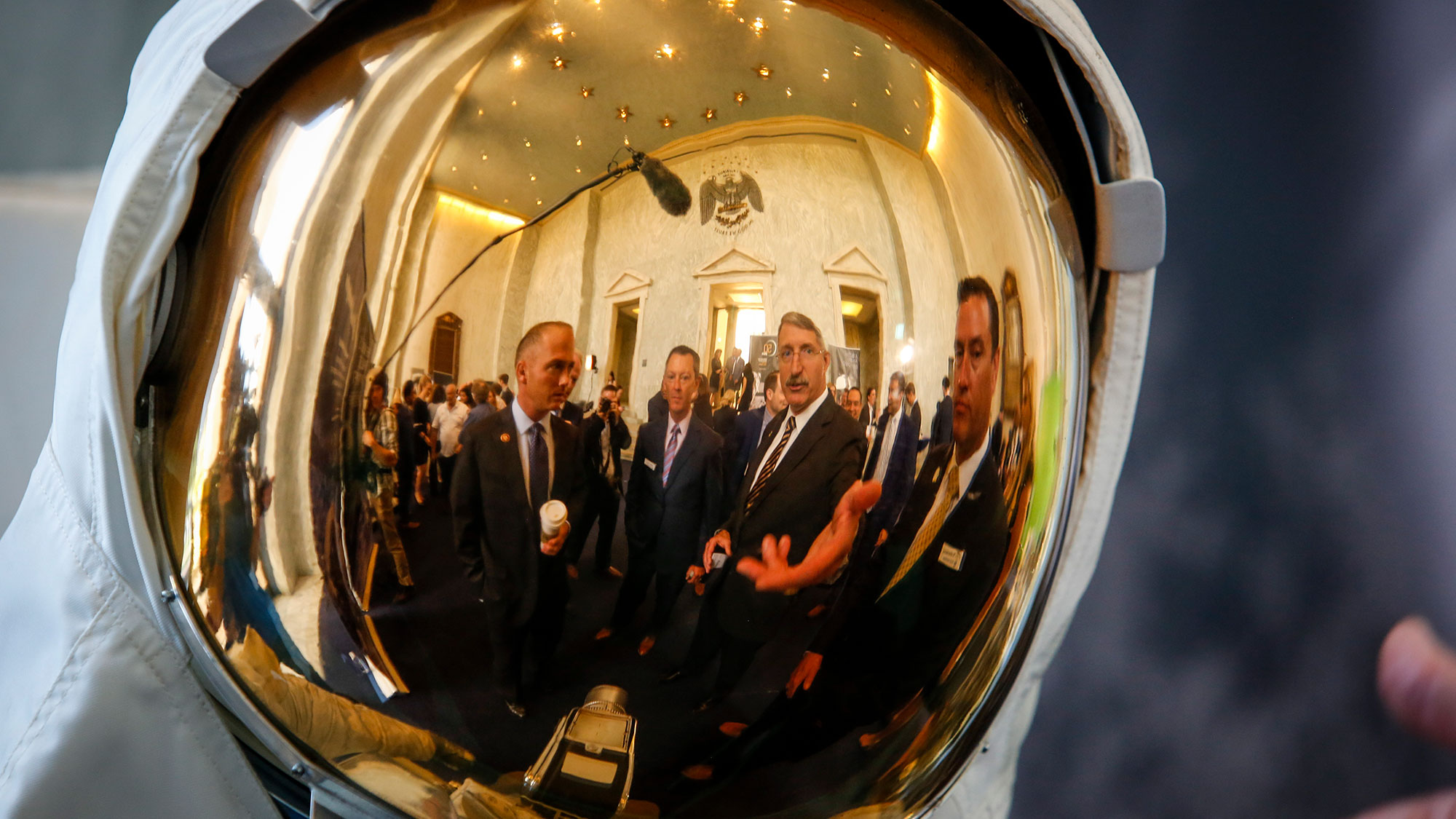
Rep. William Timmons (R-SC), left, in reflection, listens to former astronaut Dan Burbank talk about spacesuits as the prototype of Collins Aerospace, a unit of United Technologies Corp.'s Next Generation Space Suit system, is unveiled during the Space Day on the Hill on Thursday, July 25, 2019 in Washington. The showcase was timed to commemorate the 50th Anniversary of Apollo 11.
(Image credit: Eric Kayne/AP Images for United Technologies)
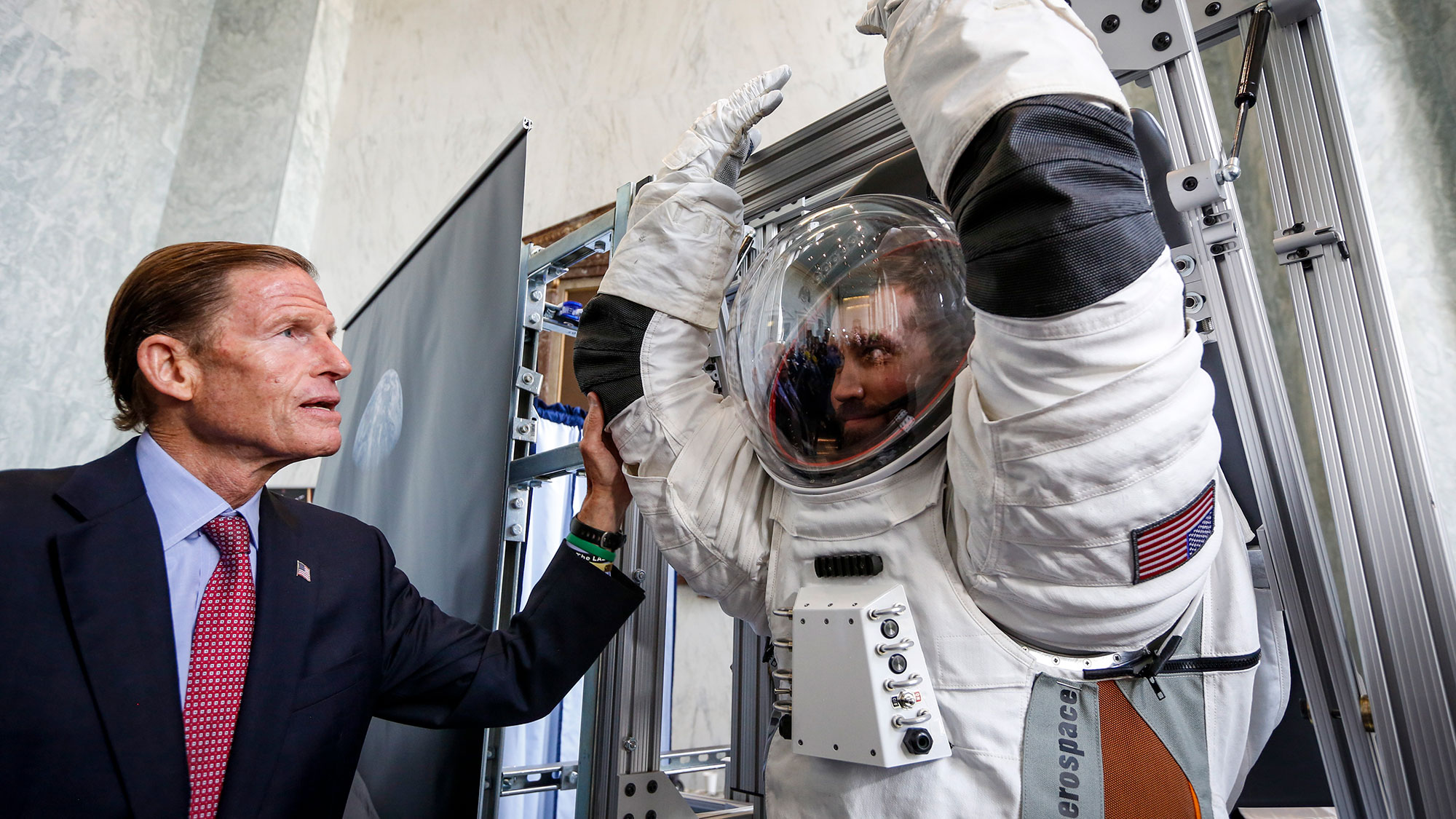
Senator Richard Blumenthal (D-CT) inspects a prototype of the Next Generation Space Suit system produced by Collins Aerospace, a unit of United Technologies Corporation, during the Space Day on the Hill on Thursday, July 25, 2019 in Washington. The showcase was timed to commemorate the 50th Anniversary of Apollo 11.
(Image credit: Eric Kayne/AP Images for United Technologies)
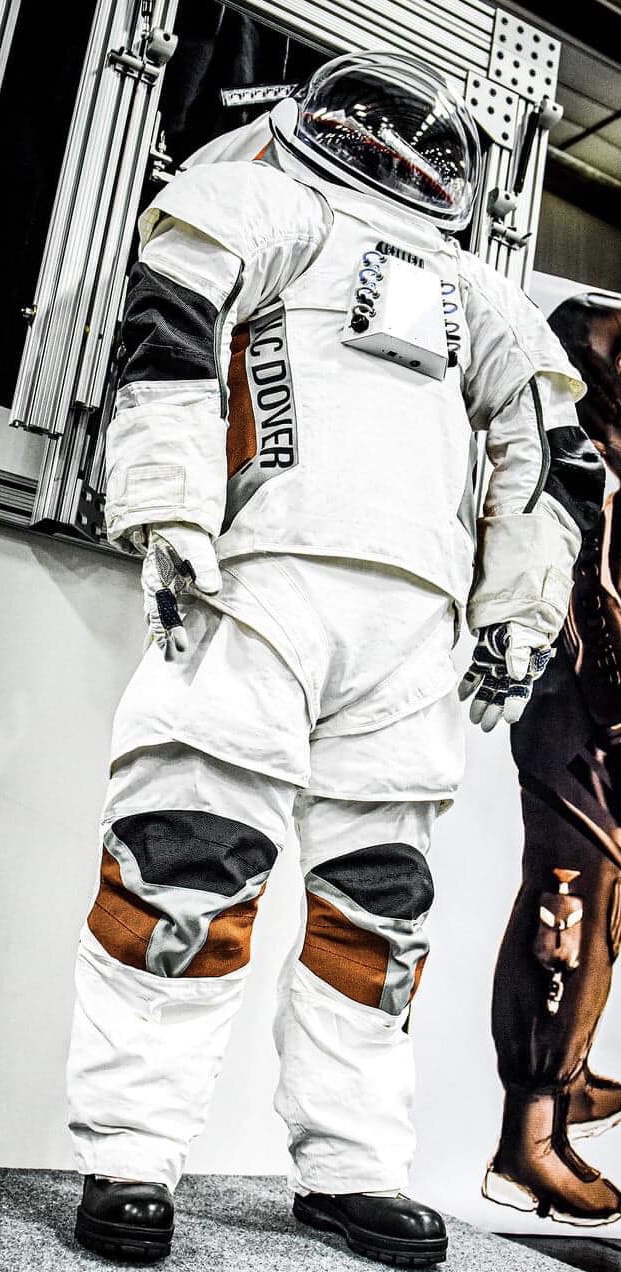
A full-body view of Astro, ILC Dover's Next Generation Spacesuit.
(Image credit: John Mollura)
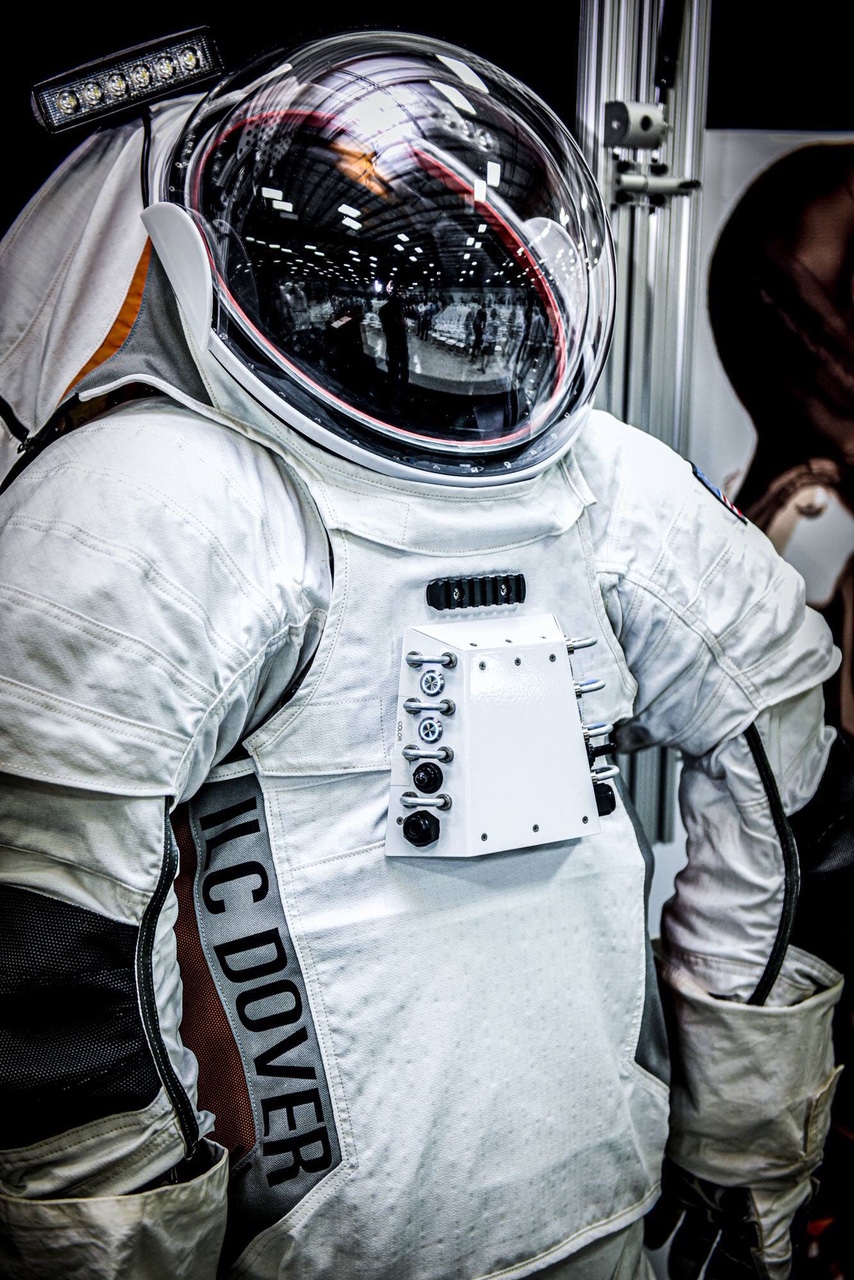
The upper torso of Astro, ILC Dover's Next Generation Spacesuit.
(Image credit: John Mollura)
"The event on Capitol Hill showcased Astro's mobility and advanced sizing capability," Patty Stoll, Senior Director & Division Manager of space systems at ILC Dover, told Space.com in an email. Additionally, she added that "by partnering with Collins Aerospace, who provided a prototype life-support backpack, Astro was able to walk around the Rayburn Building foyer without being tethered to a pressure cart."
In addition to revealing Astro at the event on Capitol Hill, ILC Dover President & CEO Fran DiNuzzo unveiled Sol, a new commercial launch, entry and abort (LEA) spacesuit.
The new Astro suit boasts a number of improvements over the extravehicular mobility unit (EMU) spacesuit that astronauts on the space station currently use to complete spacewalks. Collins Aerospace said the new suit is equipped with improved carbon dioxide-removal tech that will allow for longer-duration missions.
The Next Generation Space Suit system will also allow astronauts to move around easier in space, with improved mobility joints and an improved torso design with advanced sizing features. Improved motors and electronics on the suit will make it lighter and smaller.
While Astro is designed to work for spacewalks, the suit can also be configured for planetary exploration, Stoll said. Spacewalks require very little torso mobility, but astronauts who land and walk around on destinations like the moon and Mars will require significant mobility and flexibility.
However, adding mobility features to a suit can't increase weight, so "ILC Dover has developed a walking lower torso that provides all the mobility an astronaut will need to explore the moon or Mars without burdening the suit with unnecessary weight that was traditionally considered necessary for a 'walking' exploration spacesuit," Stoll added.
Additionally, it will be easy for astronauts to switch between these two suit configurations, Stoll explained. "Both the zero-gravity and walking lower torsos attach to the upper torso via a quick disconnect, allowing an astronaut to easily switch between the two depending on the mission," she said.
The new suit will also employ a pair of Astro gloves, which will improve on the ILC Dover Phase VI glove which, according to Stoll, "has been NASA's workhorse." The new suit will also include a digital display system that will allow astronauts to use voice controls, access real-time data and communicate over HD video.